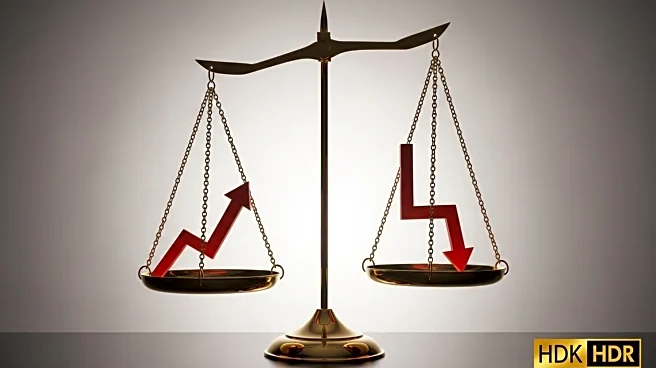What's Happening?
The Federal Reserve has reduced its benchmark interest rate by a quarter-point, marking the first cut in nine months. This adjustment lowers the federal funds rate to approximately 4.1%, down from 4.3%. The decision comes amid stalled inflation progress and a cooling labor market, presenting challenges for Americans facing high prices and a tough job market. While consumer borrowing rates are not directly tied to the federal funds rate, shifts in Fed policy eventually affect credit cards, auto loans, mortgages, and other financial products. The Fed aims to manage prices and encourage full employment through its dual mandate, balancing inflation control with economic growth stimulation.
Why It's Important?
The rate cut is significant as it influences various aspects of the U.S. economy, including consumer borrowing costs and savings yields. Lower interest rates can ease the financial burden on households with high-interest debt, offering opportunities for refinancing and consolidation. However, savers may see reduced yields on high-yield savings accounts and certificates of deposit. The cut also impacts the auto loan market, where rates have been historically high, though relief may be slow. Additionally, credit card interest rates might decrease, providing some relief to consumers. Overall, the rate cut aims to stimulate economic growth and address inflation concerns.
What's Next?
The Federal Reserve has projected two more rate cuts before the end of the year, which could further influence borrowing costs and economic conditions. Stakeholders, including financial analysts and consumers, will be watching for these changes and their effects on the economy. Prospective homebuyers and borrowers may benefit from gradually declining interest rates, while savers might need to adjust their strategies to cope with lower yields. The broader impact on consumer financial health and market dynamics will unfold as the Fed continues its monetary policy adjustments.










